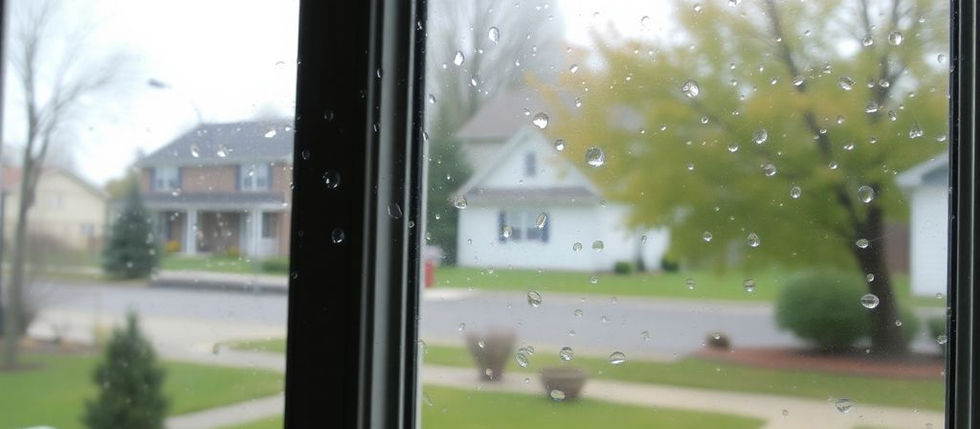Upgrading attic ventilation is essential for maintaining a healthy and energy-efficient home. Proper airflow helps to regulate temperature, prevent moisture buildup, and extend the life of your roof. This article will guide you through the importance of attic ventilation, the different types of systems available, and how to implement upgrades effectively, especially in New Haven's unique climate.
Key Takeaways
Good attic ventilation keeps your home comfortable and saves energy.
There are different types of ventilation systems, each with its own benefits.
Regular checks and maintenance of your ventilation system are crucial.
Seasonal changes affect how you should ventilate your attic.
Hiring a professional can ensure the job is done right.
Understanding the Importance of Attic Ventilation
Benefits of Proper Ventilation
Proper attic ventilation is crucial for maintaining a healthy home. It helps regulate temperature, prevents moisture buildup, and extends the lifespan of your roof. Here are some key benefits:
Reduces energy costs by improving efficiency.
Protects insulation from damage.
Enhances indoor air quality by reducing allergens.
Common Ventilation Issues in New Haven
In New Haven, many homes face ventilation challenges due to:
Old construction methods that lack modern ventilation.
Humidity levels that can lead to moisture problems.
Poorly designed ventilation systems that do not allow for adequate airflow.
How Ventilation Affects Energy Efficiency
Good ventilation can significantly impact your home's energy efficiency. When warm air escapes and cooler air enters, it helps maintain a comfortable temperature. This balance can lead to:
Lower heating and cooling costs.
A more comfortable living environment.
Reduced strain on HVAC systems, leading to longer lifespans.
Types of Attic Ventilation Systems
Ridge Vents: Pros and Cons
Ridge vents are installed at the peak of your roof and are essential for letting out hot air. They help maintain a balanced airflow by allowing cooler air to enter from lower vents. However, they may not be effective if not paired with adequate intake vents.
Gable Vents: An Overview
Gable vents are located on the gable ends of your attic. They primarily serve as exhaust vents but can also help with intake if positioned correctly. They are a good option for enhancing air quality and reducing heat buildup.
Soffit Vents: Essential for Airflow
Soffit vents are crucial for drawing fresh air into the attic. They prevent moisture buildup and ensure proper air circulation. Without them, achieving effective ventilation can be challenging. Here are some key points about soffit vents:
They work best when combined with other vent types.
They help maintain a balanced ventilation system.
Their absence can lead to increased humidity and heat.
Attic Fans: When to Use Them
Attic fans can significantly improve airflow in your attic. They actively push out hot air, making your home cooler. Here are some considerations:
Powered Vents: These use electricity and can be set to turn on at specific temperatures.
Unpowered Vents: These rely on natural airflow and are more cost-effective.
Solar Vents: These are eco-friendly options that use solar energy to operate.
In summary, choosing the right combination of ventilation systems is vital for optimal airflow and energy efficiency in your home. Consider your specific needs and the climate in New Haven when making your decision.
Steps to Upgrade Your Attic Ventilation
Evaluating Your Current System
Before making any changes, it’s essential to assess your existing attic ventilation. This helps you understand what works and what doesn’t. Here are some steps to follow:
Check for any visible signs of moisture or mold.
Measure the airflow in your attic.
Identify any blocked vents or insulation issues.
Choosing the Right Ventilation System
Once you know your current situation, you can decide on the best ventilation system for your attic. Consider these options:
Ridge Vents: Great for natural airflow.
Gable Vents: Useful for homes with specific roof designs.
Soffit Vents: Essential for allowing fresh air in from below.
Attic Fans: Helpful for actively pushing out hot air.
Installation Tips and Best Practices
When you’re ready to install your new system, keep these tips in mind:
Always follow the manufacturer’s instructions.
Ensure proper sealing to prevent air leaks.
Regularly check and clean your vents to maintain airflow.
By following these steps, you can ensure that your attic ventilation is effective and efficient, ultimately enhancing your home’s comfort and energy efficiency. Remember, if you’re unsure, it’s always a good idea to consult with a professional.
Seasonal Considerations for Attic Ventilation
Winter Ventilation Tips
During winter, it’s crucial to keep your attic ventilated to prevent moisture buildup. Proper ventilation helps avoid ice dams on your roof, which can cause significant damage. Here are some tips:
Ensure that your soffit vents are clear of snow and ice.
Use ridge vents to allow warm air to escape.
Check for any blockages in your ventilation system.
Summer Ventilation Strategies
In the summer, heat can build up in your attic, making your home uncomfortable. Here are some strategies to improve airflow:
Install attic fans to help push out hot air.
Open gable vents to allow cooler air to enter.
Consider using reflective insulation to reduce heat absorption.
Adjusting Ventilation for New Haven’s Climate
New Haven experiences a mix of weather conditions throughout the year. To adapt your attic ventilation:
Evaluate your current system to ensure it meets seasonal needs.
Install adjustable vents that can be opened or closed based on the season.
Regularly inspect and maintain your ventilation system to ensure it functions properly.
By following these seasonal tips, you can ensure that your attic remains well-ventilated throughout the year, enhancing comfort and energy efficiency in your home.
Hiring Professionals for Attic Ventilation Upgrades
Finding Qualified Contractors in New Haven
When it comes to upgrading your attic ventilation, finding the right contractor is crucial. Here are some tips to help you:
Ask for recommendations from friends or family.
Check online reviews to gauge customer satisfaction.
Verify credentials and ensure they are licensed and insured.
Questions to Ask Your Contractor
Before hiring a contractor, make sure to ask these important questions:
What experience do you have with attic ventilation systems?
Can you provide references from previous clients?
What is your estimated timeline for the project?
How do you handle unexpected issues during installation?
Cost Considerations and Budgeting
Understanding the costs involved can help you plan better. Here’s a simple breakdown:
In summary, hiring professionals for attic ventilation upgrades is a smart move. They can ensure that your system is installed correctly, which will help improve airflow and energy efficiency in your home. Don't hesitate to reach out to local experts to discuss your options!
DIY Attic Ventilation Upgrades
Tools and Materials Needed
To upgrade your attic ventilation, you will need the following tools and materials:
Screwdriver: For removing and installing vents.
Drill: To make holes for new vents.
Measuring tape: To ensure proper sizing.
Safety goggles: To protect your eyes during work.
Ventilation materials: Such as soffit vents, ridge vents, or attic fans.
Step-by-Step Guide
Evaluate your current ventilation: Check how well your attic is ventilated. Look for signs of moisture or heat buildup.
Choose the right system: Decide whether you need passive vents, like soffit and ridge vents, or active systems like attic fans.
Install new vents: Follow the manufacturer's instructions for installation. Make sure to seal any gaps to prevent leaks.
Test airflow: After installation, check if air is flowing properly through the vents.
Safety Precautions
Always wear safety gear, including gloves and goggles.
Ensure your ladder is stable when accessing the attic.
Be cautious of electrical wires and insulation materials.
Highlight
Consider contacting Connecticut Custom Creations for expert help with your attic upgrades. They offer premium services and can help you visualize your new attic with a tailored design.
Maintaining Your Attic Ventilation System
Regular Inspection and Cleaning
To keep your attic ventilation system working well, it’s important to check it regularly. Here are some steps to follow:
Inspect vents for any blockages like leaves or dirt.
Clean out any debris that might be stuck in the vents.
Check for signs of rust or damage on metal parts.
Troubleshooting Common Problems
If you notice issues with airflow, consider these common problems:
Blocked vents can stop air from moving.
Damaged fans may not work properly.
Insufficient insulation can lead to temperature problems.
When to Replace Ventilation Components
Sometimes, parts of your ventilation system may need to be replaced. Look for these signs:
If vents are cracked or broken.
If fans are making unusual noises or not working at all.
If you notice a significant increase in energy bills, it might be time for an upgrade.
In summary, keeping your attic ventilation system in good shape involves regular inspections, troubleshooting issues, and knowing when to replace parts. This will help ensure better airflow and energy efficiency in your home, especially in areas like New Haven where weather can vary significantly. Consider options like attic fan installation services in Waterbury to enhance your system further.
Keeping your attic ventilation system in good shape is important for a healthy home. Regular checks can help prevent problems like mold and heat buildup. If you want to learn more about how to maintain your attic, visit our website for tips and expert advice!
Conclusion
In summary, improving attic ventilation is crucial for maintaining a healthy home in New Haven. By understanding airflow patterns and making necessary upgrades, homeowners can enhance air movement and reduce stagnant areas. Whether it's through ridge vents, gable vents, or attic fans, each option plays a role in ensuring fresh air circulates effectively. Investing in proper ventilation not only boosts energy efficiency but also extends the life of your roof. With the right approach, you can create a more comfortable living space while protecting your home from moisture and heat damage.
Frequently Asked Questions
Why is attic ventilation important?
Attic ventilation helps keep your home cool in summer and prevents moisture buildup in winter. This can protect your roof and improve energy efficiency.
What are the signs of poor attic ventilation?
Signs include excessive heat in the attic, ice dams in winter, and high energy bills. If you notice these, it might be time to check your ventilation.
How do I know if I need more vents in my attic?
If your attic feels hot or humid, or if you see condensation on the roof, you may need more vents to allow fresh air in and stale air out.
Can I install attic ventilation myself?
Yes, you can install some types of ventilation like soffit or gable vents as a DIY project. However, for complex systems, hiring a professional is recommended.
What types of attic ventilation systems are available?
Common types include ridge vents, gable vents, soffit vents, and attic fans. Each has its own benefits depending on your home's needs.
How often should I check my attic ventilation system?
You should inspect your attic ventilation at least once a year, especially before winter and summer, to ensure everything is working properly.















Comments